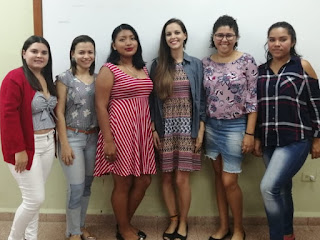5 Easy Steps to Successfully Launching an Engaging English Course for Kids

By Peace Corps Volunteer Laura Layton, Chiriquí, Panamá Summer English Course Teachers (2019): Ashley, Ingris , Brianys , Laura (me), Cristibelle , and Melanie In this article, I share resources and suggestions for how to organize your class to maximize student learning and engagement and lower your stress from planning. Are you an English as a Second or Foreign Language teacher looking for ways to improve your class organization and increase student engagement? Do you find yourself overwhelmed with the task of lesson planning for your class? If so, you're in the right place. In this blog post, I'll provide you with valuable resources and practical suggestions to help you optimize your class organization for better student learning outcomes. By implementing these strategies, you'll not only reduce your stress levels but also attract more students to your class. So, let's dive in and discover how to take your English class to the next level! Part o
